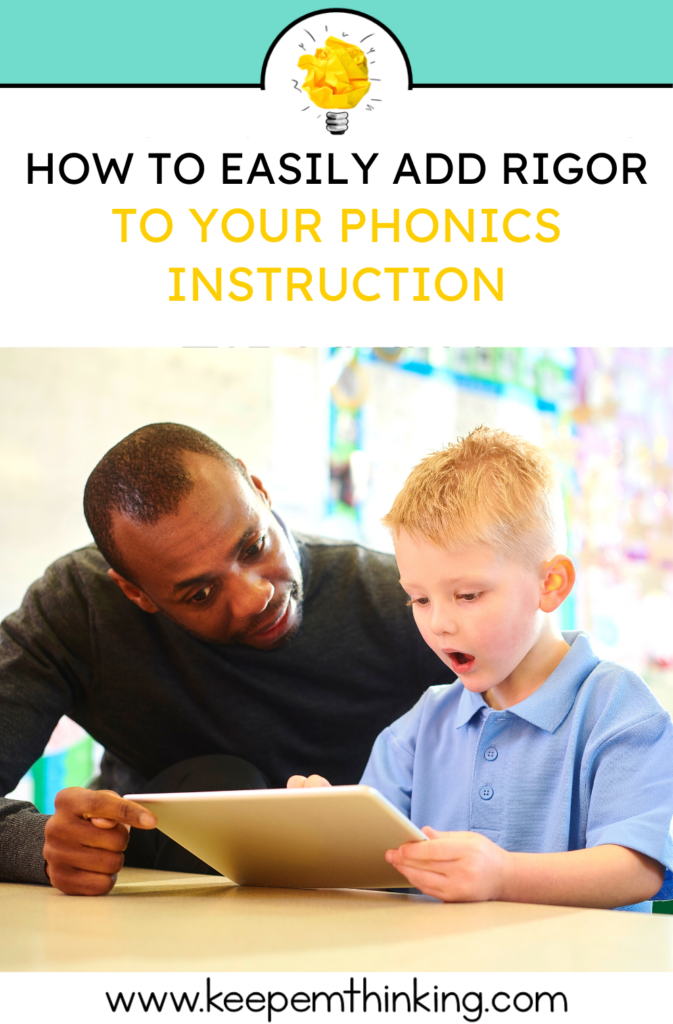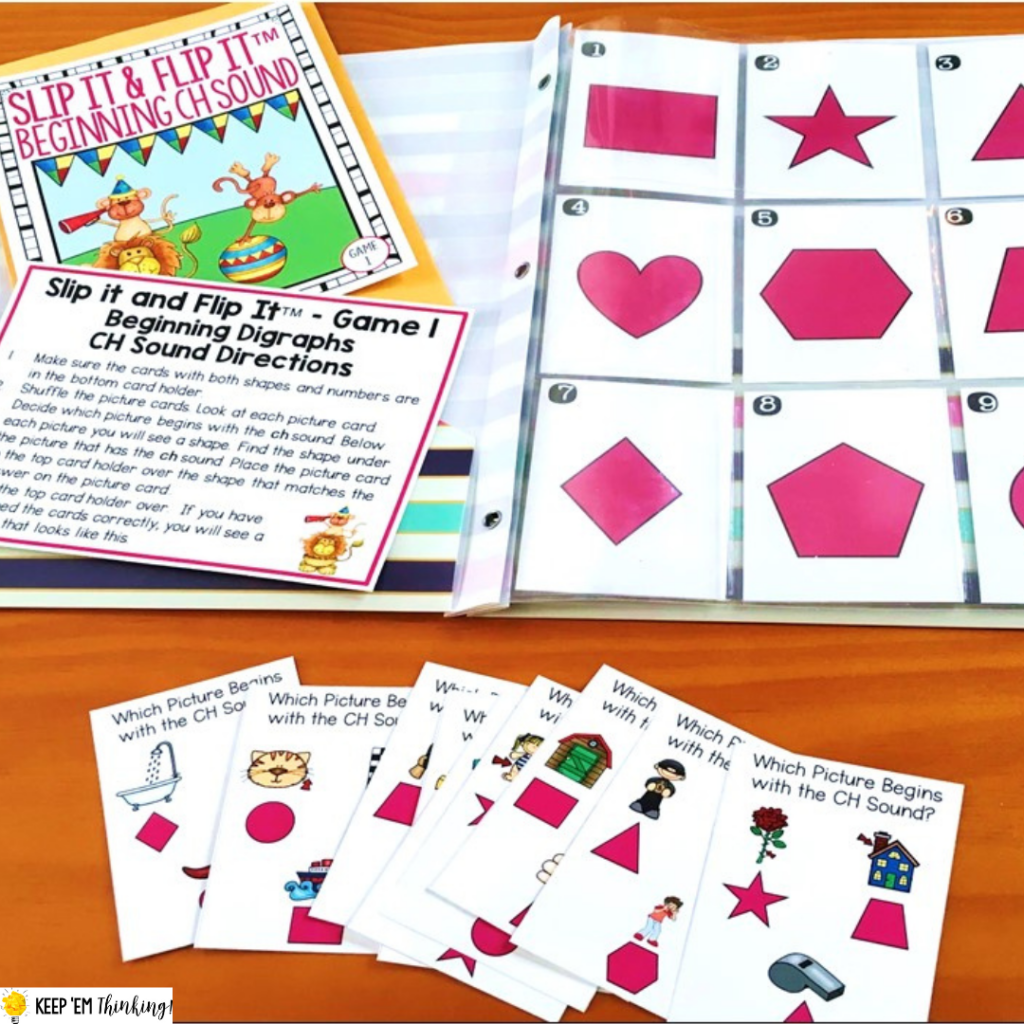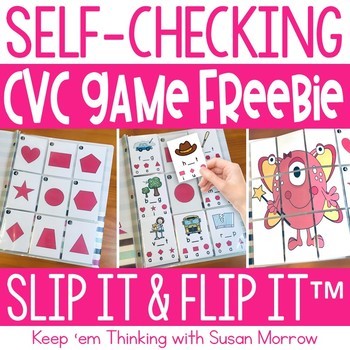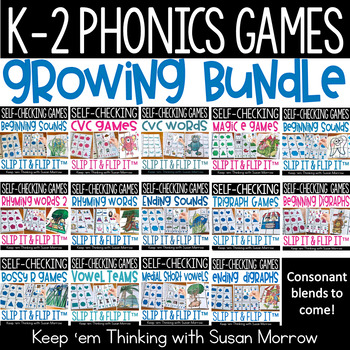Phonics is a keystone component of the primary classroom. So much of the daily rhythm in the classroom revolves around strengthening phonics skills and continuing to grow in phonemic awareness. But how do you keep it interesting? How do you continue to challenge those minds and maintain active learning when it comes to phonics? Don’t worry- I have JUST the thing! Today, I’m sharing 4 simple ways to easily add rigor to your phonics instruction.
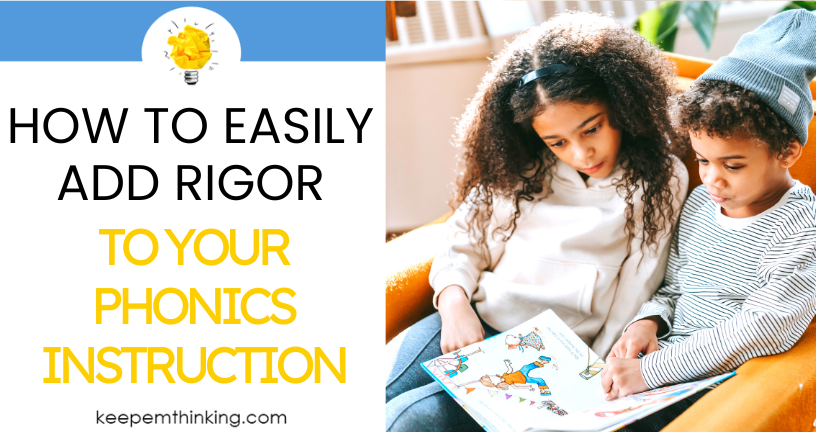
1. Use Student Suggestions
Sometimes, the best way to challenge students is with their own suggestions. As a teacher in the primary grades, it’s all too easy to fall into the habit of prompting students and providing suggestions to “get them started”. While this is a valid approach, it’s also interesting to let students take the reins from time to time.

During phonics instruction, ask children to choose their own words for the activity and allow them to seek the answers. For example, this is a great tactic to use when working on rhymes. Let’s say you are working on brainstorming rhyming words. You might provide a few examples and then ask students to choose a word, any word, they would like to find rhyming words for.
Students might choose an easy word like “bat” or “star” and that’s fine. Let them list out all the words they can think of for the word of their choice until they can’t brainstorm any further. On the other hand, you might have some students choose a word that’s more difficult, like “mustard”. Sure, there are words that rhyme with mustard, but will they be words your students are familiar with?
Allow students to work through this process and try to identify words that rhyme with the word of their choice. This is a great opportunity to dive into introducing new vocabulary words to match their rhyme, like “custard” or “flustered”. Providing these opportunities to students will spark interest and curiosity beyond basic phonics instruction.
2. Group Students By Ability For Phonics Instruction
You might already be doing this with your small groups, but let’s take a moment to reflect on why this is so crucial in the classroom. When looking to add rigor to your phonics instruction, it’s important to remember that grouping children with similar abilities and strengths will provide opportunities for the most growth. This is especially true when you implement tip number 1 and use your student’s suggestions!

By grouping students by skill level, you open up the door for more conversation, cooperation, and group communication among your children. This will challenge and motivate your students as they present new ideas to each other. This environment of like-minded learners will prompt them to ask questions and push the boundaries on what they already know, adding more opportunities for growth.
Another huge benefit to this is that you will be able to differentiate your lessons easily and assign activities that you know will provide challenges. Gifted and high-achieving students must be challenged regularly to avoid boredom and maintain motivation. By grouping children together by skill level and strengths, you can make sure all of your students get exactly what they need to flourish during phonics instruction.
3. Incorporate Manipulatives in Phonics Instruction
One of the best ways to encourage and maintain students’ interest is with the use of hands-on learning experiences. Children often need to break free from typical pencil and paper activities and manipulative items with their hands to truly grasp new concepts and put them into practice. Most of us probably consider manipulatives most useful when teaching math, but don’t forget- there are some fantastic manipulatives out there for phonics too! Here are a few of my favorites:
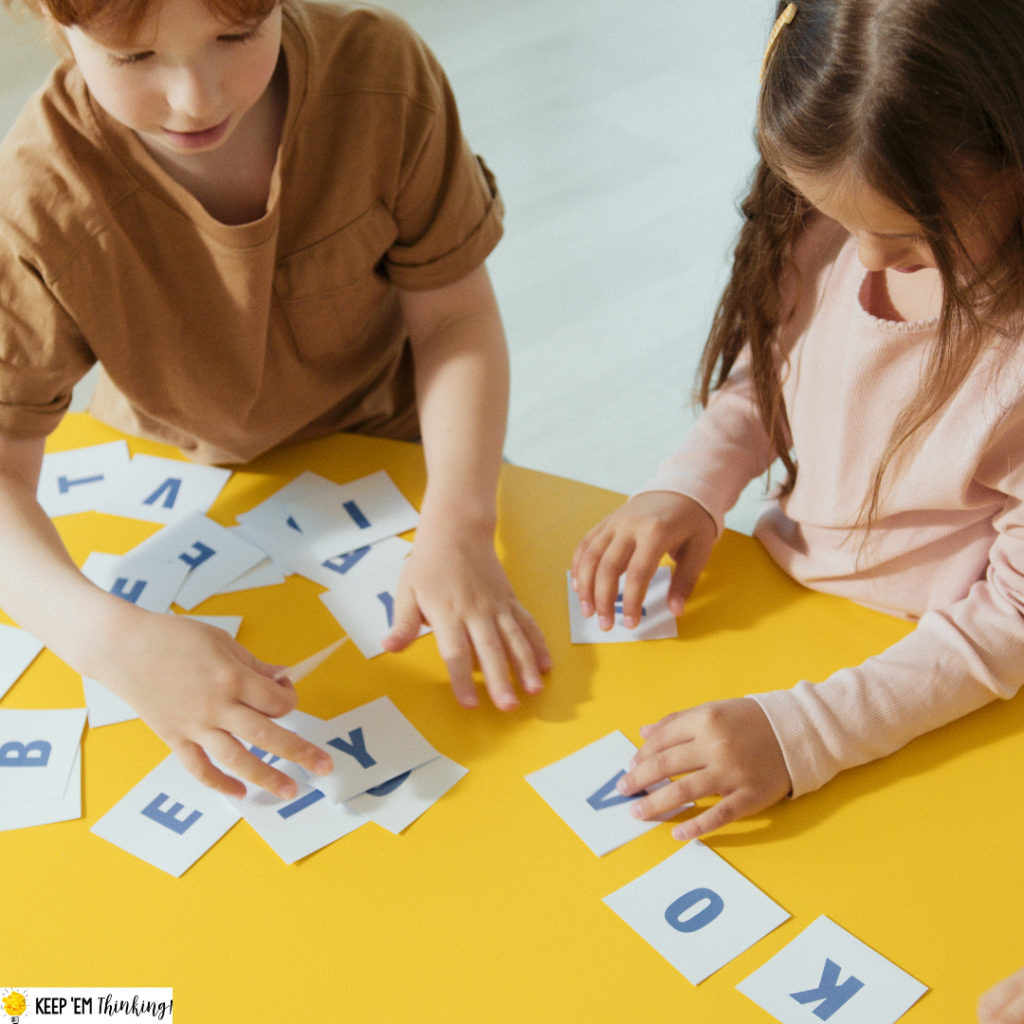
- Magnetic Letters: These are an obvious go-to but worth mentioning due to their versatility. A good set of magnetic letters can be used in small groups, center activities, and demonstrations. These are a must!
- Letter Tiles: Though quite similar to magnetic letters, sometimes having a variety of manipulatives is all you need to regain attention and focus. These phonics tiles are ultra-versatile and provide a great tactile experience when working on phonics skills.
- Phonics Dominoes: This set of dominoes is a great way to work on blends and digraphs in a hands-on format. Adding these to your phonics instruction is sure to engage kiddos and provide more opportunities for learning.
- Word Puzzles: Children love puzzles and these self-correcting ones are a great set to have on hand when working with CVC words. These are geared toward younger learners and are a great way to start out when working on beginning phonics instruction.
- CVC Word Building Cards: These are a step up from the puzzles, with a wider variety of words. These cards also provide a self-correcting feature and can be used with magnetic letters or letter tiles. As a bonus, this will provide you with an “instant center” at a moment’s notice.
While it’s a bit of an investment upfront, I have found that building up your own supply of manipulatives really helps to keep phonics instruction engaging and fun. You can easily adjust the level of difficulty in your activities and use these manipulatives over and over again to provide challenging lessons to your students.
4. Use Slip-It and Flip-It Self-Correcting Games
Self-correcting activities are such a great way to have students practice concepts and then reflect on how they did. But have you ever struggled with students “guessing” in these activities by completing the puzzle rather than actually working through the concepts? This is a common flaw of self-correcting activities and can be a real issue among gifted learners!
To combat this, while still getting the benefit of using self-correcting activities, I created my own resource for phonics instruction. I call them “Slip It & Flip It Games” and they can be used for a variety of phonics concepts. These self-correcting puzzles use a plastic baseball card holder to allow students to arrange cards in a specific formation based on their answers.
To play, students will choose a task card and work through the answer. Once they have it, they will match their task cards to the one in their baseball card holder with the matching shape. They will repeat until all the task cards are aligned with the shapes. Finally, they can flip the plastic baseball card sleeve and check to see if their answers are correct. If they answered correctly, a picture was revealed. If not, the picture will be mixed up. Be sure to check out this post if you want to see how I used these during center time in the classroom!
I love this activity because it allows students to focus on the concept without trying to solve the puzzle first. The picture provides an opportunity for students to see if they answered correctly and adds an element of fun without being distracted by it as they make their answer selections!
Test Out Slip It & Flip It In Your Classroom
Looking to add some rigor to your lessons and challenge your students with engaging lessons? You can grab a free Slip It & Flip It Phonics Game here! This freebie focuses on short vowel CVC words. Your students will be instantly engaged and ready to participate in this fun activity during phonics instruction!
If you and your students love these phonics games as much as I do, grab the Slip It & Flip It Bundle to keep your students engaged and challenged all year long.
Using a combination of manipulatives and fun activities like Slip It & Flip It Games is a great way to keep your students engaged and challenged in phonics. Don’t be afraid to switch things up from time to time and have fun planning challenging lessons that will keep your kiddos thinking!
Save these Ideas for Adding Rigor to Your Phonics Instructions
Don’t forget to save this post on your favorite classroom Pinterest board so you can come back to it when you need some practical ways to add rigor to your phonics instruction.
